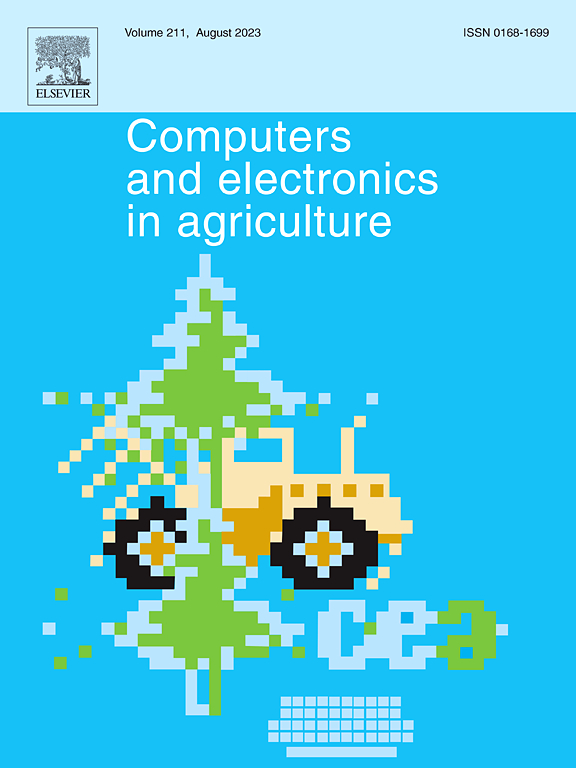Detection the internal quality of watermelon seeds based on terahertz imaging combined with image compressed sensing and improved-real-ESRGAN
IF 7.7
1区 农林科学
Q1 AGRICULTURE, MULTIDISCIPLINARY
引用次数: 0
Abstract
Traditional watermelon seed detection methods are inefficient, destructive and difficult to accurately identify empty shells or defective seeds. It limits the improvement of market value and planting efficiency. In this study, a non-destructive detection method based on terahertz (THz) imaging combined with compressed sensing and Improved-Real-ESRGAN is proposed for fast and accurate assessment of the internal quality of watermelon seeds. The study is divided into three stages: firstly, THz imaging efficiency is optimised by combining compressed sensing techniques. The THz time-domain imaging system is utilised to acquire images of the interior of the seeds. Different random measurement matrices with sparse reconstruction algorithms are compared. The imaging efficiency and reconstruction quality are optimised. Second, the image quality is improved by super-resolution enhancement modelling. The discriminator upsampling method in Real-ESRGAN is replaced with pixel shuffling. Super-resolution enhancement model is built. This step provides a clearer image input for subsequent seed fullness detection. Thirdly, threshold segmentation is used to calculate seed fullness based on the enhanced image. Its applicability in defect detection is verified. The results show that the combination of BernoulliMtx and ADMM_TV algorithms saves 87.5 % of the imaging time with a measurement ratio of only 12.5 %. THz image after compressed perception combined with Improved-Real-ESRGAN processing: PSNR, SSIM and other indicators show that the image quality have been significantly improved, as well as the authenticity of image details. The fullness detection error is reduced to 3.52 %, and the average detection error of the validation set is 5.79 %. Efficient identification of seed defects is achieved. Compared to the traditional method, the optimised process proposed in this study significantly reduces the detection time. The detection accuracy is improved. It provides theoretical support and technical reference for the quality detection of agricultural products, especially for the evaluation of internal defects of seeds.
基于太赫兹成像结合图像压缩感知和改进的real- esrgan的西瓜种子内部品质检测
传统的西瓜种子检测方法效率低,破坏性大,难以准确识别空壳或残次品。它限制了市场价值和种植效率的提高。本研究提出了一种基于太赫兹(THz)成像结合压缩感知和改进的real - esrgan的西瓜种子内部质量无损检测方法。研究分为三个阶段:首先,结合压缩传感技术优化太赫兹成像效率;太赫兹时域成像系统用于获取种子内部的图像。比较了不同随机测量矩阵的稀疏重构算法。优化了成像效率和重建质量。其次,通过超分辨率增强建模提高图像质量。将Real-ESRGAN中的鉴别器上采样方法替换为像素变换。建立了超分辨率增强模型。这一步为后续的种子饱满度检测提供了更清晰的图像输入。在增强图像的基础上,采用阈值分割方法计算种子的饱满度;验证了该方法在缺陷检测中的适用性。结果表明,结合BernoulliMtx和ADMM_TV算法可节省87.5%的成像时间,而测量率仅为12.5%。压缩感知后的太赫兹图像结合improved - real - esrgan处理:PSNR、SSIM等指标表明图像质量得到了明显提高,图像细节的真实性也得到了提高。充分度检测误差减小到3.52%,验证集的平均检测误差为5.79%。实现了种子缺陷的有效识别。与传统方法相比,本研究提出的优化流程显著缩短了检测时间。提高了检测精度。为农产品质量检测,特别是对种子内部缺陷的评价提供理论支持和技术参考。
本文章由计算机程序翻译,如有差异,请以英文原文为准。
求助全文
约1分钟内获得全文
求助全文
来源期刊

Computers and Electronics in Agriculture
工程技术-计算机:跨学科应用
CiteScore
15.30
自引率
14.50%
发文量
800
审稿时长
62 days
期刊介绍:
Computers and Electronics in Agriculture provides international coverage of advancements in computer hardware, software, electronic instrumentation, and control systems applied to agricultural challenges. Encompassing agronomy, horticulture, forestry, aquaculture, and animal farming, the journal publishes original papers, reviews, and applications notes. It explores the use of computers and electronics in plant or animal agricultural production, covering topics like agricultural soils, water, pests, controlled environments, and waste. The scope extends to on-farm post-harvest operations and relevant technologies, including artificial intelligence, sensors, machine vision, robotics, networking, and simulation modeling. Its companion journal, Smart Agricultural Technology, continues the focus on smart applications in production agriculture.
 求助内容:
求助内容: 应助结果提醒方式:
应助结果提醒方式:


